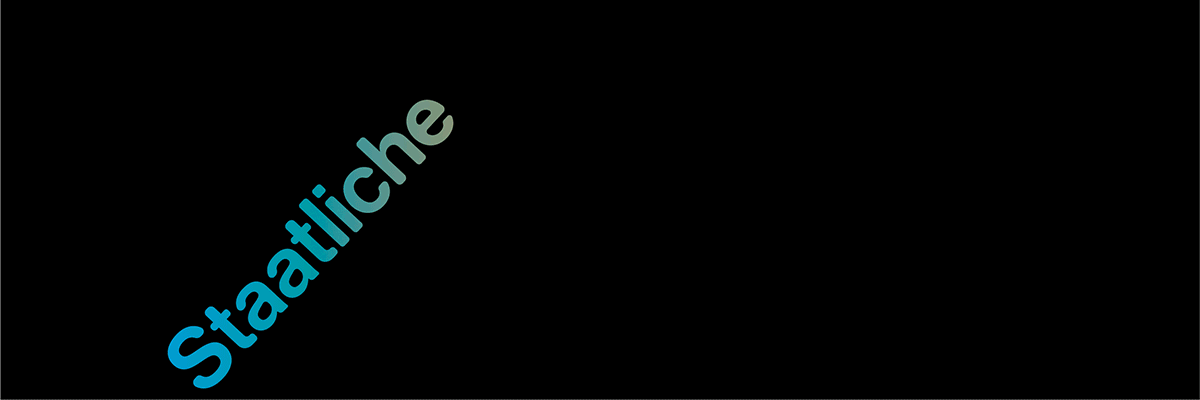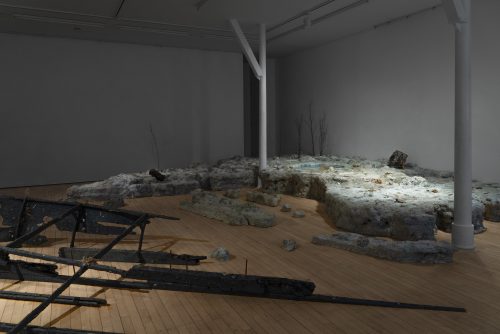
Ayan Farah
The Heliacal Rising

Advertisement











How do we define a place? Ayan Farah’s work is marked by her deep interest in the geographical and geopolitical characteristics of the places she spends time in, most recently Sweden, Senegal and England. In these places she collects minerals, soil or plants such as indigo, which she later uses in her studio to produce pigments for dyeing. The “pictorial ground” always consists of historical textiles from the 18th and 19th centuries, which Ayan Farah cuts up into individual fragments for dyeing and later sews together again by hand and machine to form strict compositions. During the dyeing process, the textiles become “ vessels” of the geographical characteristics of certain places as well as their socio- and geopolitical characteristics. At the same time, the textiles are “places of memory” of the stories of their former owners, often “marked” by hand-em-broidered initials that refer to past times as an “index” and now become part of Ayan Farah’s works. This “cyclical” approach to textiles, which is currently finding expression in pop culture in the form of “recycled fashion”, is based on Ayan Farah’s biographical roots in Somalia where the collection and processing of textiles with hand embroidery has been practiced by her family. Ayan Farah’s keen eye for the availability of natural resources is also based on the fact that her ancestors were nomads who, depending on water and natural resources, moved from place to place and adapted their way of life to their immediate surroundings.
In this respect, Ayan Farah’s work process follows the concept of “cyclical developments”. In each new cycle, Ayan Farah uses a new element, but also incorporates materials from previous work cycles. Some textile fragments only find their “ place” within a composition after ten years. In this sense, Ayan Farah’s works are an allegory of past, present and future. Her recent stay in Senegal as part of the Black Rock Awards has had a significant influence on her current work cycle. In Senegal she collected leaves from indigo plants from which she later extracted pigments for coloring in her Stockholm studio. Other layers of color are based on yellow pigments that she obtained from an earlier harvest of marigolds from an empty plot near her parents’ house in the Stockholm Archipelago.
Another important aspect are metal and rust particles that she collected during the pandemic from “lost” objects around Alfred Nobel’s former factory for dynamite in Vinterviken, Sweden, in the close vicinity of her former studio. Having been a nature reserve in the 1990s, the area had been closed after the discovery of chemical contaminations of the earth and water, and re-opened again after the soil was cleaned. Ayan Farah sees the process of dyeing as a “performative process”. On the one hand, this refers to the extraction of the dyes, which are elaborately “mixed” in a studio kitchen, and then the folding, application of the dye, layering and drying of the textile fragments. The dyeing takes place in several layers, similar to a “building” that is constructed piece by piece. The layering of earth is an important part of the African architectural tradition, which constructs houses from layers of earth or dried stones, especially in desert regions, in dialog with the immediate surroundings. In this sense, the definition of place in Ayan Farah’s work is both personal and geopolitical. Her artistic approach thus expands far beyond the aspects of land art and abstract painting and is located in our current discussion about climate change, the distribution of natural resources and their influence on the location of our individual living space.
Born in 1978 in Sharjah, United Arab Emirates, to Somali parents, Ayan Farah grew up in Sweden and lived for a long time in London, where she studied painting at the Royal College of Art. Today she lives and works in Stock- holm, Sweden. Ayan Farah‘s works are in institutional collections such as Kunstpalast, Düsseldorf, the Art Collection of the Federal Republic of Germany, the Klein Collection, the David Roberts Art Foundation, London, Public Art Agency Sweden and the Kadist Foundation, Paris. Recently she has exhibited at Fondazione di Prada, Sainsbury Centre of Visual Arts in Norwich, El Espacio Twenty Three in Miami (all 2023), „In the Eyes of the Beholder“ at the Tarble Arts Centre, Charleston, USA, Bundeskunsthalle Bonn, Hunterian Art Gallery in Glasgow (all 2022) and Alison and Peter Klein Foundation in 2019. In 2021 she was awarded with the Black Rock Senegal artist residency.




